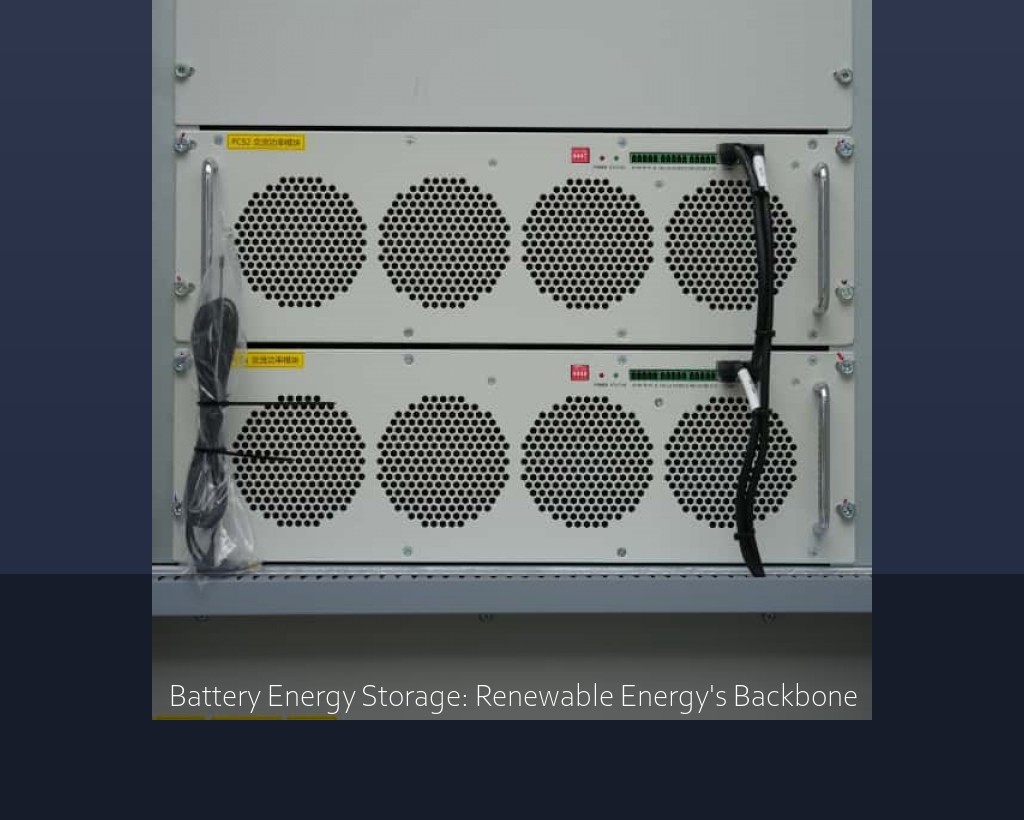Battery Energy Storage: Renewable Energy's Backbone
Ever wondered why your solar panels stop working at night? That's the $15 billion question the battery energy storage system (BESS) industry aims to solve. As renewable sources generated 30% of global electricity in 2023, their intermittent nature keeps utilities awake at night - literally.
Battery Energy Storage: Renewable Energy's Backbone

Table of Contents
Why Energy Storage Defines Our Clean Future
Ever wondered why your solar panels stop working at night? That's the $15 billion question the battery energy storage system (BESS) industry aims to solve. As renewable sources generated 30% of global electricity in 2023, their intermittent nature keeps utilities awake at night - literally.
Here's the kicker: Wind and solar farms often waste 15-20% of generated power without proper storage. "It's like farming crops you can't refrigerate," says Dr. Elena Marquez, lead engineer at Tesla's Megapack division. This energy hemorrhage explains why Germany paid wind farms $1.2 billion last year to switch off during surplus production.
Battery Chemistry Face-Off: Lithium vs Alternatives
Let's cut through the marketing jargon. While lithium-ion dominates 92% of new installations, emerging solutions are rewriting the rules:
- Flow batteries (8-hour discharge vs lithium's 4-hour max)
- Sodium-ion (40% cheaper materials than lithium)
- Thermal storage (Molten salt solutions lasting 10+ hours)
But wait - lithium isn't bowing out yet. Recent breakthroughs in lithium-sulfur tech boosted energy density by 300%, potentially enabling week-long storage. The real dark horse? Zinc-air batteries using breathable electrodes, recently tested in Texas microgrids.
When Batteries Saved the Grid: California's Solar Story
Remember California's 2022 heatwave blackouts? Fast-forward to 2024 - the state now runs 94% on renewables during peak sun hours, thanks to 12 GWh of battery buffers. PG&E's Moss Landing facility alone stores enough juice to power 300,000 homes through evening demand spikes.
"Our batteries acted like shock absorbers during last month's wildfire-induced outages," reveals Grid Operator Amy Chen. "They responded 12x faster than natural gas plants."
Solid-State Batteries: Hype vs Reality
Automakers promised solid-state batteries by 2025, but here's the reality check: Current prototypes last only 500 cycles - half what EVs need. Still, Toyota's sulfide electrolyte design survived -40°C tests in Alaska last winter, hinting at cold climate potential.
The battery revolution isn't coming - it's already here. From Tesla's 4680 cells to China's CATL condensed matter batteries, storage costs have plunged 80% since 2018. But the ultimate game-changer might be iron-air batteries, using rust cycles to store energy for days. Early pilots show 100-hour discharge capacity at $20/kWh - cheaper than dam construction.
So next time you charge your phone, remember: The same technology enabling your Instagram scroll might soon power entire cities. Now that's what I call an energy transition.
Related Contents

Battery Energy Storage Systems: Renewable Energy's Backbone
Imagine a world where solar panels go dark at sunset, wind turbines stand still on calm days, and power grids collapse during peak demand. Sounds like a scene from a dystopian movie, right? Well, that’s exactly the reality we’d face without Battery Energy Storage Systems (BESS). As renewable energy capacity grows—solar and wind now account for 12% of global electricity—the need for reliable storage has never been more urgent.

Battery Energy Storage Systems (BESS): The Brain Behind Renewable Energy Revolution
Ever wondered why your solar panels stop working at night? Or why wind farms sometimes pay customers to take their excess electricity? The answer lies in energy storage - or rather, the lack of it. As of March 2025, over 30% of renewable energy generated worldwide gets wasted due to inadequate storage solutions. That's enough to power entire cities!

Battery Energy Storage Systems: Powering Renewable Energy Transition
You know how people talk about renewable energy like it's some magic bullet? Well, here's the kicker: solar panels don't work when it's cloudy, and wind turbines stand still on calm days. This intermittency problem costs the global economy $12 billion annually in wasted clean energy - enough to power 15 million homes. That's where battery energy storage systems (BESS) come charging in, quite literally.

Battery Energy Storage: Renewable Energy's Game-Changer
We've all seen the headlines - solar panels now power entire cities, and wind turbines outpace coal plants. But here's the kicker: intermittent generation caused $2.3 billion in wasted renewable energy last year alone. When the sun sets or winds stall, traditional grids scramble to fill the gap with... wait for it... fossil fuel backups.

Battery Energy Storage Systems: Renewable Energy's Missing Link
Let's cut through the jargon: a Battery Energy Storage System isn't just a fancy battery pack. Think of it as the conductor of an orchestra where lithium ions are the musicians. The real magic happens in the battery management system (BMS) - the unsung hero preventing your neighborhood's solar array from turning into a Roman candle.
